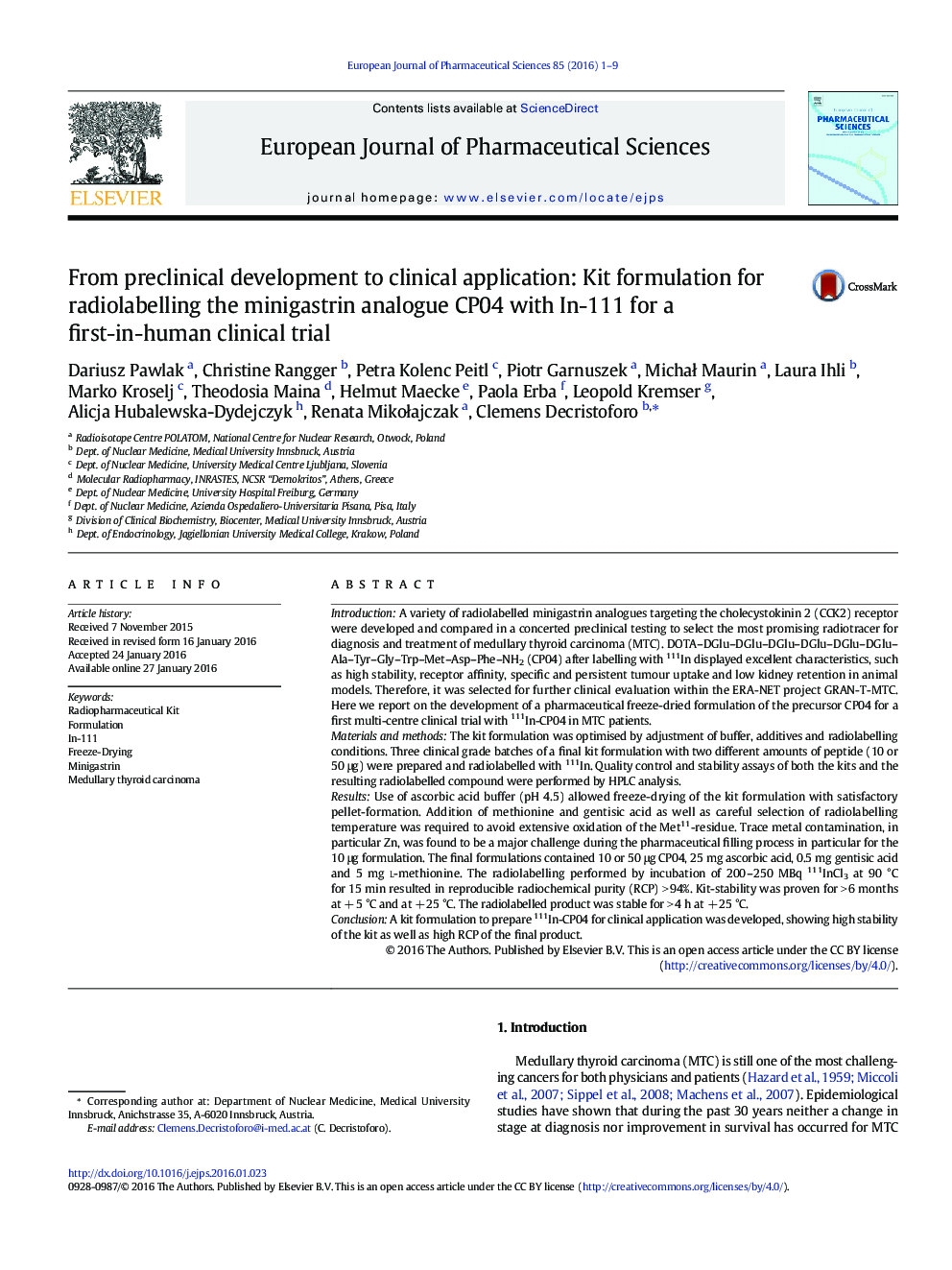| Article ID | Journal | Published Year | Pages | File Type |
|---|---|---|---|---|
| 5809701 | European Journal of Pharmaceutical Sciences | 2016 | 9 Pages |
IntroductionA variety of radiolabelled minigastrin analogues targeting the cholecystokinin 2 (CCK2) receptor were developed and compared in a concerted preclinical testing to select the most promising radiotracer for diagnosis and treatment of medullary thyroid carcinoma (MTC). DOTA–DGlu–DGlu–DGlu–DGlu–DGlu–DGlu–Ala–Tyr–Gly–Trp–Met–Asp–Phe–NH2 (CP04) after labelling with 111In displayed excellent characteristics, such as high stability, receptor affinity, specific and persistent tumour uptake and low kidney retention in animal models. Therefore, it was selected for further clinical evaluation within the ERA-NET project GRAN-T-MTC. Here we report on the development of a pharmaceutical freeze-dried formulation of the precursor CP04 for a first multi-centre clinical trial with 111In-CP04 in MTC patients.Materials and methodsThe kit formulation was optimised by adjustment of buffer, additives and radiolabelling conditions. Three clinical grade batches of a final kit formulation with two different amounts of peptide (10 or 50 μg) were prepared and radiolabelled with 111In. Quality control and stability assays of both the kits and the resulting radiolabelled compound were performed by HPLC analysis.ResultsUse of ascorbic acid buffer (pH 4.5) allowed freeze-drying of the kit formulation with satisfactory pellet-formation. Addition of methionine and gentisic acid as well as careful selection of radiolabelling temperature was required to avoid extensive oxidation of the Met11-residue. Trace metal contamination, in particular Zn, was found to be a major challenge during the pharmaceutical filling process in particular for the 10 μg formulation. The final formulations contained 10 or 50 μg CP04, 25 mg ascorbic acid, 0.5 mg gentisic acid and 5 mg l-methionine. The radiolabelling performed by incubation of 200–250 MBq 111InCl3 at 90 °C for 15 min resulted in reproducible radiochemical purity (RCP) > 94%. Kit-stability was proven for > 6 months at + 5 °C and at + 25 °C. The radiolabelled product was stable for > 4 h at + 25 °C.ConclusionA kit formulation to prepare 111In-CP04 for clinical application was developed, showing high stability of the kit as well as high RCP of the final product.
Graphical abstractFigure optionsDownload full-size imageDownload high-quality image (162 K)Download as PowerPoint slide
